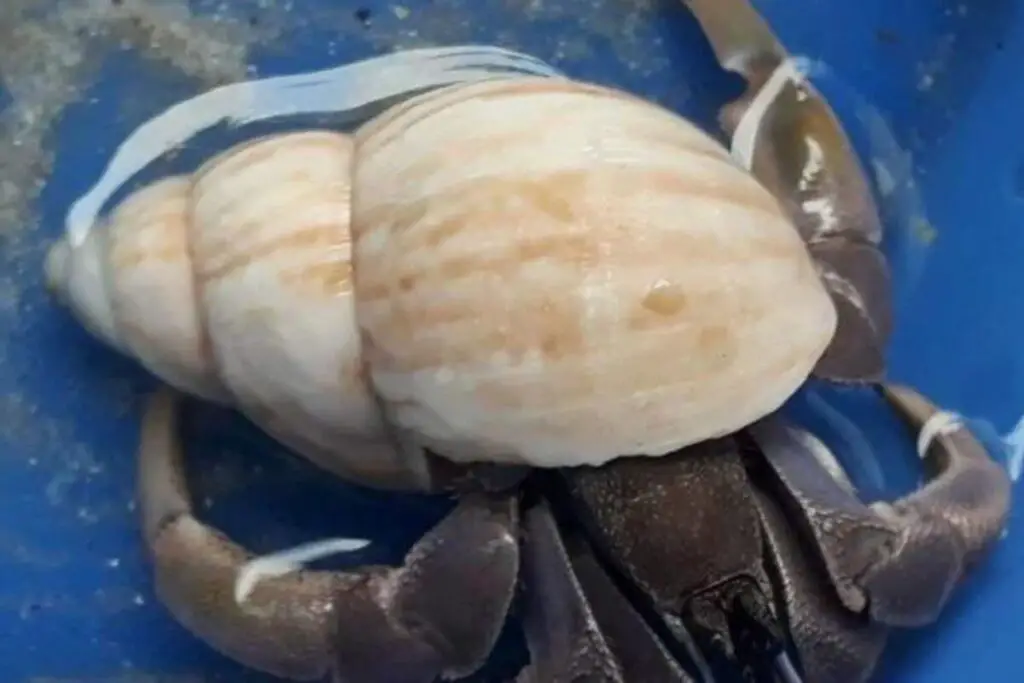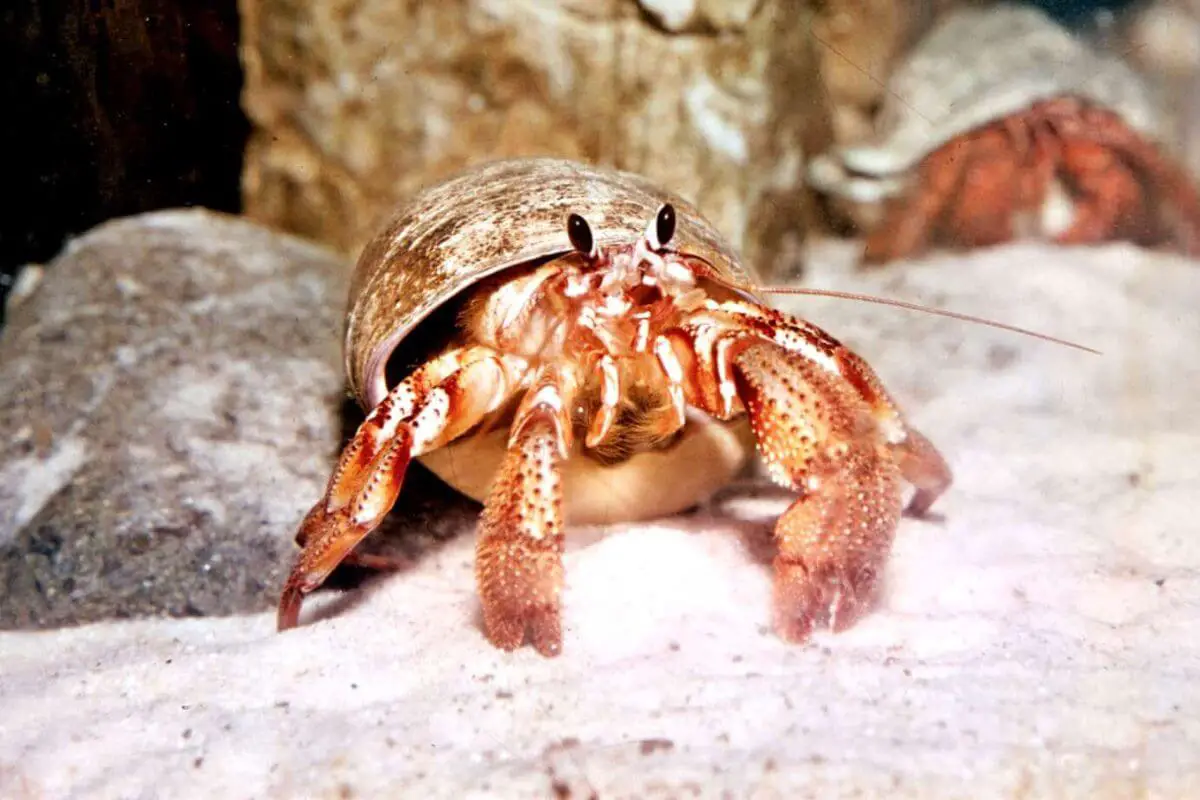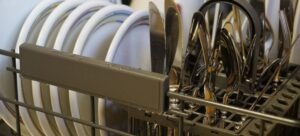Hermit crabs, or “Hermies,” are fascinating and unique pets that require proper care, including occasional baths to maintain their health and well-being. In this comprehensive guide, we’ll walk you through the steps of giving your hermit crab a bath, ensuring a stress-free and enjoyable experience for both you and your crustaceous companion.
I. Understanding the Need for Hermit Crab Baths

A. Removal of Excess Salt
- Hermit crabs use a specialized gill structure to breathe, which can accumulate excess salt. Baths help them excrete this salt, preventing respiratory issues.
B. Hydration
- Hermit crabs absorb water through their modified gills and enjoy the opportunity to hydrate during baths, especially essential for those in captivity.
C. Molting Preparation
- Regular baths can simulate a humid environment, aiding in the molting process by softening the exoskeleton and making it easier for the crab to shed.
II. Preparation for a Hermit Crab Bath
A. Gathering Supplies
i. Shallow Container:
- Select a shallow container with low sides, allowing your hermit crab to easily enter and exit.
ii. Fresh Dechlorinated Water:
- Fill the container with fresh dechlorinated water at an appropriate temperature (around 75-80°F or 24-27°C).
iii. Additional Shells:
- Place extra shells in the container for your hermit crab to explore and potentially change into during the bath.
III. Creating a Relaxing Bath Environment
A. Maintaining Optimal Water Depth
- Ensure the water depth allows your hermit crab to submerge its lower body without fully immersing itself.
B. Temperature Considerations
- Maintain a comfortable water temperature to mimic their natural habitat. Use a thermometer to monitor the water temperature closely.
C. Adding Safe Accessories
- Place non-toxic decorations or rocks in the bath for your hermit crab to climb on, providing a sense of security.
IV. The Hermit Crab Bathing Process
A. Gentle Placement
- Gently place your hermit crab into the water, allowing it to explore the environment at its own pace.
B. Observation and Interaction
- Observe your hermit crab during the bath, ensuring it remains calm. Gently splash water over its shell with your hand to encourage hydration.
C. Shell Inspection
- While bathing, inspect your hermit crab’s shell for any signs of damage or parasites. This is an opportune time to check the overall health of your pet.
D. Patience during Molting Periods
- If your hermit crab is molting or has recently molted, be particularly gentle and avoid disturbing it unnecessarily.
V. Post-Bath Care and Drying
A. Gentle Drying Process
- Gently pat your hermit crab with a soft, clean cloth to remove excess water. Avoid excessive handling to minimize stress.
B. Returning to Habitat
- Return your hermit crab to its habitat promptly after the bath, ensuring a smooth transition.
VI. Frequency of Hermit Crab Baths
A. General Guidelines
- Hermit crabs generally benefit from baths once a week, but individual needs may vary. Observe your pet’s behavior and adjust the frequency accordingly.
B. Molting Considerations
- During molting periods, reduce the frequency of baths, as molting itself provides a humid environment.
VII. Conclusion: A Refreshed and Happy Hermit Crab
In conclusion, giving your hermit crab a bath is not just a routine task but an opportunity for bonding and ensuring their well-being. By following these steps and being attentive to your hermit crab’s behavior, you can provide a spa-like experience that contributes to their overall health and happiness.
May your hermit crab enjoy many delightful and refreshing spa days in its cozy shell abode!
VIII. Enhancing the Hermit Crab Bathing Experience
A. Soothing Ambient Environment
- Create a soothing ambiance by dimming the lights and minimizing disturbances. Hermit crabs are more likely to relax in a calm and quiet setting.
B. Playing with Bubbles
- Introduce gentle bubbles to the water, making the bath more engaging for your hermit crab. Ensure the bubbles are non-toxic and won’t harm your pet.
IX. Understanding Hermit Crab Body Language
A. Signs of Distress
- Be attentive to signs of distress, such as excessive hiding, aggression, or extended periods of inactivity. If your hermit crab exhibits stress, reduce the frequency of baths and consult a vet if needed.
B. Positive Indicators
- Look for positive indicators like relaxed antennae, a calm demeanor, and exploration of the bath environment. These signals suggest that your hermit crab is comfortable and enjoying the experience.
X. Common Bathing Mistakes to Avoid
A. Using Soaps or Detergents
- Avoid using soaps or detergents in the bathwater, as these can be harmful to your hermit crab’s sensitive exoskeleton.
B. Forcing Interaction
- Never force your hermit crab into the water or manipulate it against its will. Allow it to explore the bath environment at its own pace.
C. Inadequate Drying
- Ensure thorough but gentle drying after the bath. Leaving your hermit crab damp can lead to health issues, including potential mold growth.
XI. Post-Bath Enrichment
A. Providing Fresh Foods
- Offer fresh foods immediately after the bath. Hermit crabs often enjoy a post-bath snack, contributing to their overall well-being.
B. Interactive Toys
- Introduce interactive toys or objects into the habitat after the bath to keep your hermit crab mentally stimulated.
XII. Monitoring Health Post-Bath
A. Observation Period
- Observe your hermit crab for any unusual behavior or signs of distress in the hours following the bath. Quick identification of potential issues allows for prompt intervention.
XIII. Conclusion: Nurturing a Happy and Healthy Hermit Crab
In conclusion, giving your hermit crab a bath is not just a practical aspect of their care but an opportunity to enhance their overall well-being. By paying attention to their preferences, body language, and providing a positive and enriching bathing experience, you contribute to the happiness of your unique and fascinating crustacean companion.
May each hermit crab bath be a delightful ritual, strengthening the bond between you and your tiny, shelled friend.
Frequently Asked Questions (FAQs) about Hermit Crab Bathing
How often should I give my hermit crab a bath?
In general, once a week is a good frequency for hermit crab baths. However, individual needs may vary, so observe your pet’s behavior and adjust accordingly.
Can I use tap water for hermit crab baths?
It’s recommended to use dechlorinated water for hermit crab baths. Chlorine in tap water can be harmful to them. You can use a water conditioner to dechlorinate tap water.
What temperature should the bathwater be?
Aim for a water temperature between 75-80°F (24-27°C), resembling their natural habitat. Use a thermometer to ensure the water is within this range.
How long should a hermit crab bath last?
Keep the bath short, around 10-15 minutes. Prolonged baths can stress your hermit crab. If your hermit crab seems distressed, end the bath earlier.
Can I use soap or shampoo during a hermit crab bath?
No, it’s not advisable to use soap or shampoo. Hermit crabs absorb water through their exoskeleton, and chemicals can be harmful. Stick to plain, dechlorinated water.
What if my hermit crab doesn’t like baths?
Not all hermit crabs enjoy baths. If your crab seems stressed or uninterested, don’t force it. Ensure the environment is calm, and try again later.
Should I provide food during or after the bath?
Yes, offering fresh food after the bath is a good practice. Hermit crabs often enjoy a snack post-bath, contributing to their overall health.
How do I know if my hermit crab is stressed during a bath?
Signs of stress can include hiding, aggression, or extended periods of inactivity. If you notice these behaviors, reduce the frequency of baths and monitor your crab closely.
Can I use a hairdryer to dry my hermit crab after a bath?
It’s not recommended to use a hairdryer, as the heat and force of air can be too intense for your hermit crab. Gently pat them dry with a soft cloth.
What if my hermit crab is molting?
If your hermit crab is molting or has recently molted, be especially gentle during baths. Avoid unnecessary disturbances and provide a calm environment.
Remember, each hermit crab is unique, so pay attention to their individual preferences and behaviors to ensure their well-being.



